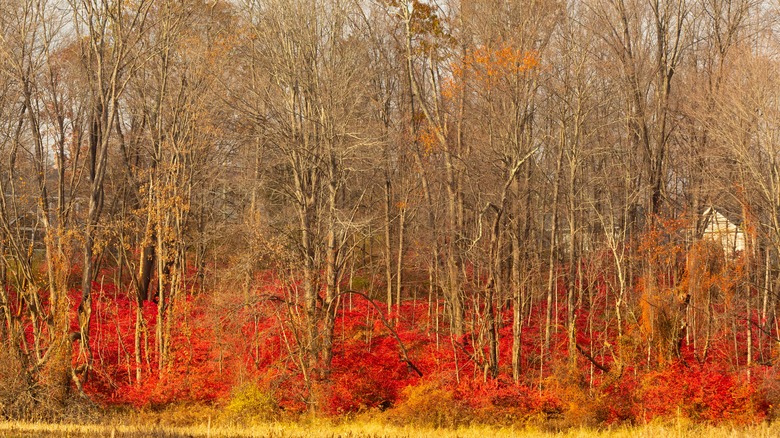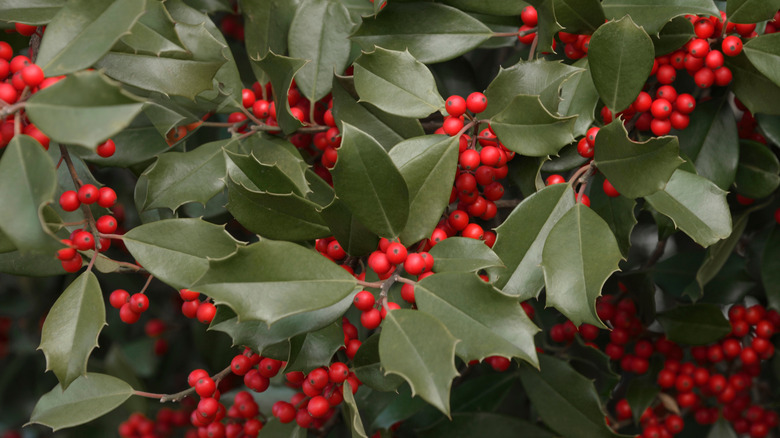Plant This Gorgeous Shrub As An Alternative To Invasive Burning Bush
No matter how pretty a plant, it's not going to stay on everybody's good list if it misbehaves. Burning bush (Euonymus alatus) is an example of a shrub that gardeners are starting to avoid in favor of better alternatives. That's because this species, also known as winged euonymus or corky spindletree, is an invasive plant that should be avoided at all costs, so it's hard to grow one in your yard with a clear conscience. Happily, the gorgeous U.S. native American holly (Ilex opaca) makes an excellent substitute for certain situations.
We don't avoid planting shrubs just because they didn't originate in a given place; an invasive designation has to do with behavior. Burning bush shrubs start off growing in yards as ornamentals, planted in part for their bright red fall color. Unfortunately, they can end up spreading throughout neighboring forests, crowding out native plants that play important roles in local ecosystems. This damage has led to burning bush shrubs being banned in Massachusetts and several other midwestern and eastern states.
Not sure if you have burning bush in your yard? You can check the problematic shrub to verify it's really Euonymus alatus. Examine its stems — those of corky spindletree have distinctive ridges or "wings" that look like cork running along either side. If you plan to remove it, American holly is an ideal substitute.
How to grow American holly as an alternative to burning bush
Burning bush is sometimes grown as a privacy screen or hedge, and American holly can easily take its place, doing an even better job at that role since this U.S. native is evergreen. Be aware that though American holly and burning bush have the same 20-foot spread, the native evergreen can mature to a much greater height, reaching 40 to 60 feet tall. No worries, though; this alternative can be pruned to keep it shorter. American holly can be grown year-round in USDA Hardiness Zones 5 to 9, in full sun or part shade, and in a variety of well-draining soil types. Plant it in early spring or fall.
Since this lovely holly doesn't lose its leaves in autumn, it doesn't have the same flaming red hue in fall as burning bush, but it does bring color to yards in a different way — with bright red winter berries. Speaking of berries, while birds and pollinators do put corky spindletree to good use as a source of food, American holly is a much better ecosystem member. It is considered a keystone species in certain parts of the U.S., such as North Carolina, where it supports an incredible 44 species of caterpillars, making it a natural bird food producer. However, if what you liked about burning bush was its bright fall foliage, there are other alternatives for invasive burning bush plants that bring the same autumn reds, such as fragrant sumac (Rhus aromatica).

